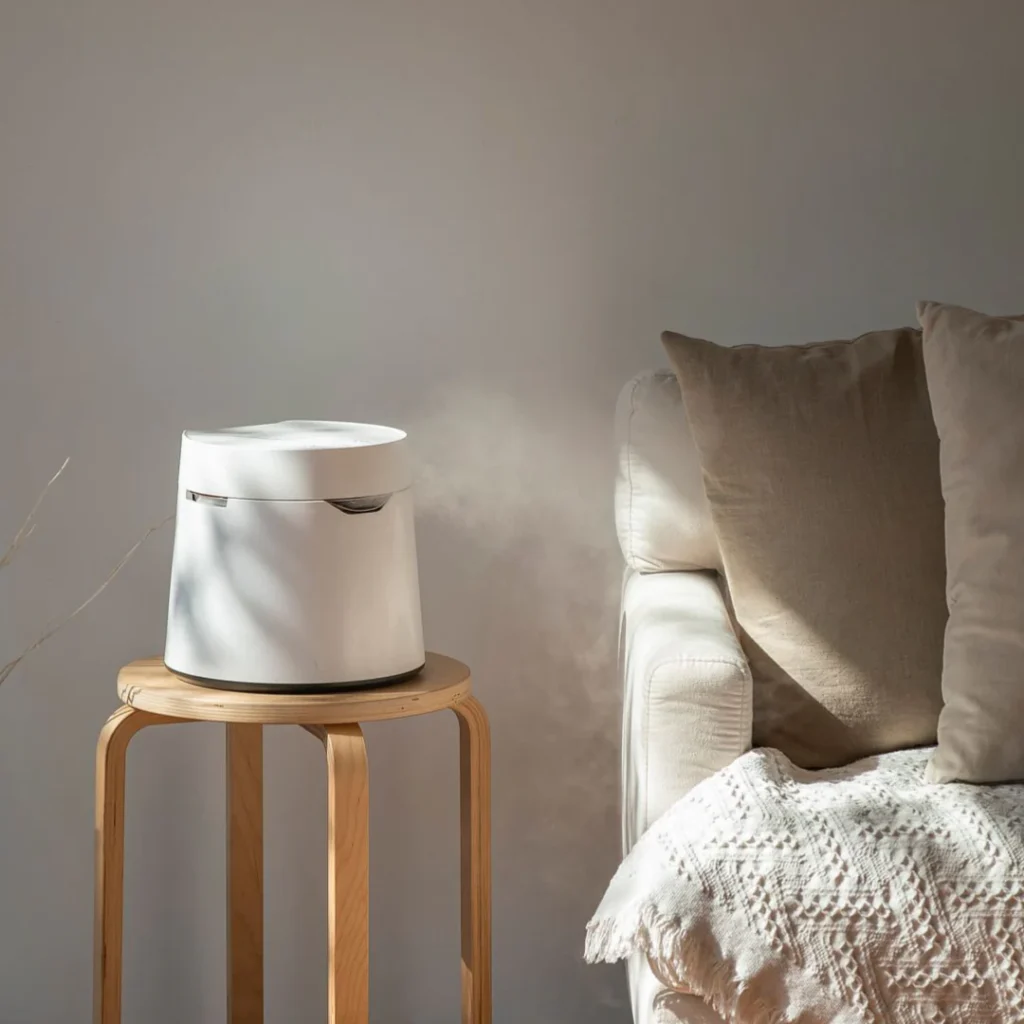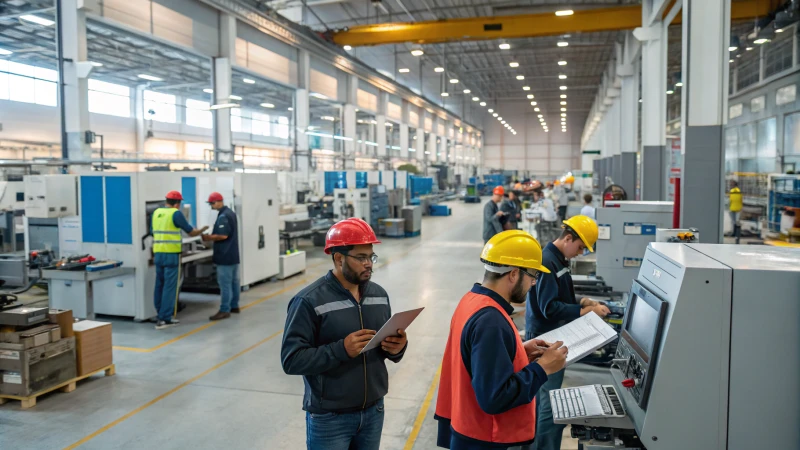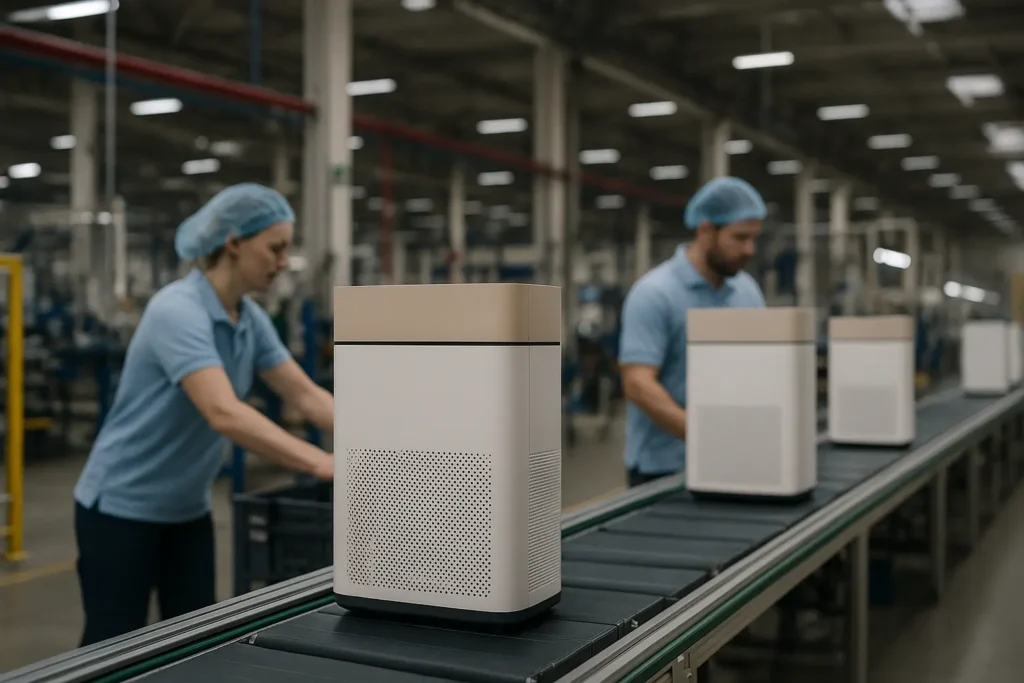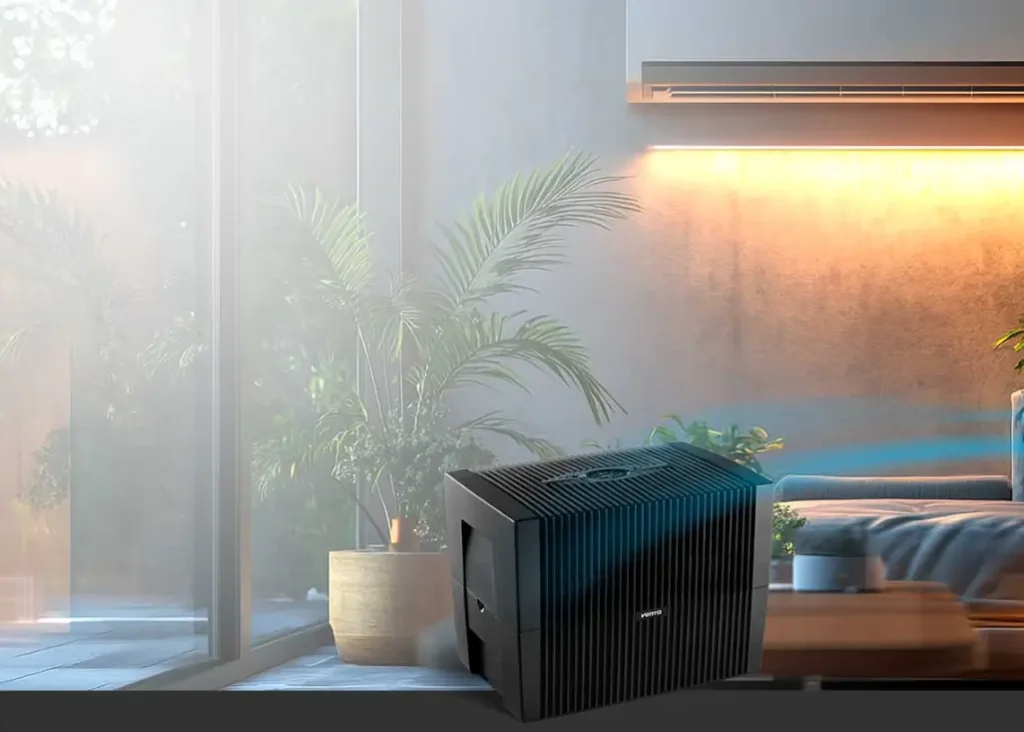لا تتمتع فلاتر الهواء المثبتة في أجهزة التدفئة والتهوية وتكييف الهواء وأجهزة تنقية الهواء بالجودة والتصميم نفسيهما. تتمثل إحدى طرق تحليل هذه الفلاتر في استخدام تصنيف MERV. تابع القراءة ومعرفة المزيد عن هذا النظام.
بينما يتحرك الهواء ويمر عبر أجهزة تنقية الهواء وغيرها من أنظمة التدفئة والتهوية وتكييف الهواء، فإنه يمر في النهاية بمرشحات مختلفة. في سياق أجهزة تنقية الهواء، تقوم المرشحات بحبس مختلف الملوثات الموجودة في الهواء، مثل المواد المسببة للحساسية والغبار ومسببات الأمراض.
ولكن ليست كل أجهزة تنقية الهواء متشابهة. ففي معظم الأحيان، تختلف في جودة الفلاتر الخاصة بها. وهنا قد تحتاج إلى معرفة ما هو أفضل تصنيف MERV للمنازل وكيف يساعد في تقييم أداء فلاتر الهواء.
ما هي تصنيفات مرشحات MERV
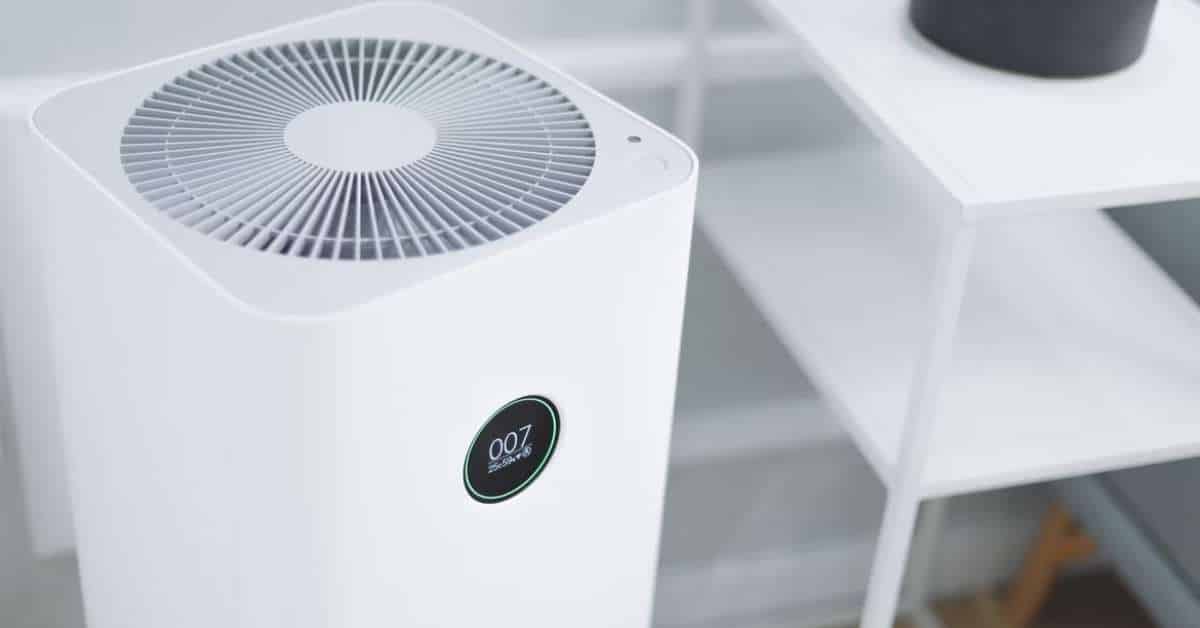
مصدر الصورة: أنسبلاش
إذا كنت جديدًا في عالم أجهزة تنقية الهواء، فمن المحتمل أنك لا تعرف ما هو تصنيف MERV. على وجه التحديد، يرمز تصنيف MERV إلى الحد الأدنى لقيمة الإبلاغ عن الكفاءة. إنها تسمية مخصصة للمرشحات وليس أجهزة تنقية الهواء بأكملها.
باختصار، يخبرك تصنيف MERV للفلاتر المنزلية بكفاءة فلتر معين في التقاط مختلف الملوثات المحمولة جواً التي تمر عبره. ومن الملاحظ أيضًا أن الفلاتر التي تتمتع بتصنيف MERV أعلى من غيرها معروفة بتفوقها في التقاط الجسيمات الصغيرة.
وبالتالي، من الطبيعي أن تتمتع فلاتر HEPA بأعلى تصنيف لمرشح MERV، نظراً لأنها مصممة لحبس الجسيمات والمواد المجهرية في الهواء.
العلاقات المالية وميرف وميرف وميرف: ما هي الاختلافات بينهما
إن الجمعية الأمريكية لمهندسي التدفئة والتبريد وتكييف الهواء (ASHRAE) بنظام MERV. واستنادًا إلى شرح ASHRAE، فإن الهدف من نظام MERV هو مساعدة المستهلكين على فهم أداء هذه الفلاتر والعثور على تصنيف MERV المثالي للمنازل.
ومع ذلك، فهو ليس النظام المتري الوحيد لتصنيف أجهزة تنقية الهواء. فلا يزال هناك MPR وFPR.
معنى مرشح الهواء FPR وأداؤه
تصنيف أداء المرشح (FPR) هو مقياس لمدى قدرة جهاز تنقية الهواء على إزالة الجسيمات من الهواء. كلما ارتفع تصنيف FPR، كلما كان جهاز تنقية الهواء أفضل في إزالة الجسيمات، بمقياس من 4 إلى 10. يعتمد FPR على حجم الجسيمات التي يمكن لجهاز تنقية الهواء إزالتها، حيث تكون الجسيمات الأصغر حجمًا هي الأصعب في إزالتها. تم إجراء هذا القياس من قبل هوم ديبوت.
الفرق بين FPR و MERV
| تصنيف FPR للمرشحات | معادل تصنيف MERV | أنواع الملوثات |
| 4 | MERV 8 - 10 | الغبار والوبر وعث الغبار والعفن |
| 5 | ||
| 6 | MERV 11 - 12 | الغبار والوبر وعث الغبار والعفن ووبر الحيوانات الأليفة والدخان والضباب الدخاني |
| 7 | ||
| 8 | MERV 13 - 16 | الغبار، والوبر، وعث الغبار، والعفن، ووبر الحيوانات الأليفة، والدخان، والضباب الدخاني، والبكتيريا، والفيروسات |
| 9 | ||
| 10 |
أفضل علامة تجارية لفلتر الهواء FPR
لا يوجد العديد من العلامات التجارية لمرشحات الهواء التي تم اختبارها تحت تصنيف FPR. ومع ذلك، تحتوي أجهزة تنقية الهواء التي تباع في هوم ديبوت على فلاتر هواء تم اختبارها تحت تصنيف FPR. إحدى ماركات فلاتر الهواء هذه هي هانيويل.
MPR
إن تصنيف أداء الجسيمات الدقيقة (MPR) هو طريقة لتقييم قدرة مرشح الهواء على إزالة الجسيمات الصغيرة من الهواء التي يقل حجمها عن 1 ميكرون. وهو تصنيف صادر عن شركة 3M. كلما ارتفع تصنيف MPR، كان الفلتر أفضل في إزالة الجسيمات. يقوم نظام MPR بتقييم قدرة الفلاتر على إزالة الجسيمات من 0.3 ميكرون إلى 1 ميكرون فقط.
الفرق بين FPR و MERV
| تقييمات MPR للمرشحات | معادل تصنيف MERV | أنواع الملوثات |
| 300 | MERV 6 - 7 | الغبار والوبر |
| 600 | MERV 8 - 10 | الغبار والوبر وعث الغبار والعفن |
| 800 | ||
| 1000 | MERV 11 - 12 | الغبار والوبر وعث الغبار والعفن ووبر الحيوانات الأليفة والدخان والضباب الدخاني |
| 1200 | ||
| 1500 | MERV 13 - 16 | الغبار، والوبر، وعث الغبار، والعفن، ووبر الحيوانات الأليفة، والدخان، والضباب الدخاني، والبكتيريا، والفيروسات |
| 1900 |
أفضل علامة تجارية لفلتر الهواء FPR
يُعد تصنيف FPR لمرشحات الهواء مهمًا، على غرار MERV. فهو يوضح مدى جودة فلتر الهواء في إزالة الجسيمات المحمولة في الهواء. وبالتالي، تحتوي بعض العلامات التجارية لأجهزة تنقية الهواء على فلاتر معتمدة بموجب هذا المقياس. من بينها العلامة التجارية Filtrete العلامة التجارية لتنقية الهواء.
MERV
كما ذكرنا، يرمز MERV إلى الحد الأدنى لقيمة الإبلاغ عن الكفاءة. وعلى وجه التحديد، فهي تقيس قدرة الفلتر على احتجاز الجسيمات والمواد التي يتراوح حجمها من 0.3 ميكرون إلى 10 ميكرون.
إنه الجمعية الأمريكية لمهندسي التدفئة والتبريد وتكييف الهواء (ASHRAE) التي توصلت إلى هذا القياس. استنادًا إلى شرح ASHRAE، فإن الهدف من MERV هو مساعدة المستهلكين على فهم أداء هذه الفلاتر والعثور على تصنيف MERV المثالي للمنازل.
تصنيف MERV للفلاتر: لماذا هو مهم؟

مصدر الصورة: أنسبلاش
لماذا من الضروري الحديث عن تصنيف MERV؟ حسناً، السبب كما يلي:
فيروس كورونا المستجد (كوفيد-19)
تعتبر الفلاتر ذات التصنيف العالي MERV فعالة في التقاط الفيروس المسبب لهذا المرض الذي قد يكون مميتاً. يجب أن يكون جهاز تنقية الهواء الخاص بك مزوداً بفلتر ذو تصنيف طبي لتقليل احتمالية حدوث انتقال فيروس كورونا المستجد (كوفيد-19) في الداخل.
وفقاً لجمعية ASHRAE، فإن الفلاتر ذات تصنيف MERV 13 مناسبة لـ COVID-19. ومع ذلك، سيكون من الأفضل أن تحصل على فلاتر ذات تصنيف MERV 14 أو أعلى لضمان أن الهواء الداخلي آمن من COVID-19.
حرائق الغابات
إذا كنت تقيم في منطقة معرضة لحرائق الغابات، فعليك إعطاء الأولوية لأنظمة تنظيف الهواء التي تحصل على درجات عالية في تصنيف MERV. إن حرائق الغابات خطيرة جداً، حتى لو لم تكن في خط الحريق. فالدخان الناتج عنها يحمل جزيئات سامة قد تؤثر على صحتك.
كفاءة الطاقة
فلاتر الهواء التي تسجل درجات عالية في تصنيف MERV قادرة على تقليل وجود الملوثات المختلفة المحمولة في الهواء - بغض النظر عن مدى صغرها. إذا كان لديك هذه الفلاتر في جهاز تنقية الهواء، فقد لا تكون هناك حاجة للتهوية الخارجية.
إذا لم تعد بحاجة إلى فتح أبوابك ونوافذك بعد الآن، فسيؤدي ذلك إلى استهلاك أفضل للطاقة. ففي نهاية المطاف، لن تضطر بعد الآن إلى الاعتماد بشكل مفرط على أنظمة التبريد والتدفئة وغيرها من أنظمة التدفئة والتهوية وتكييف الهواء. بالطبع، يُعد توفير الطاقة أحد مزايا الحصول على جهاز تنقية هواء قوي.
مخطط تصنيف MERV
تذكّر دائماً أن الرقم الأكبر لا يعني الحل الأفضل لمشاكل الهواء الداخلي لديك. على سبيل المثال، إذا كنت تستخدم فلتر هواء بتصنيف MERV أعلى مما هو موصى به، فقد يقلل ذلك من أداء جهاز تنقية الهواء.
في هذه المرحلة، من الضروري بالفعل أن تطلع على مخطط تصنيف MERV الأصلي. يمكنك استخدام هذا الأخير كمرجع في فهم فلاتر الهواء واستخدامها المناسب.
| المعيار 5.2 الحد الأدنى لقيمة الإبلاغ عن الحد الأدنى للكفاءة | كفاءة بقعة الغبار | متوسط القبض | الملوثات الخاضعة للرقابة الشائعة | الاستخدامات والتطبيقات الشائعة | نوع المرشح | التصنيفات والاستخدامات المحددة |
| 20
19 18 17 |
غير متاح
غير متاح غير متاح غير متاح |
غير متاح
غير متاح غير متاح غير متاح |
<جسيمات أقل من 0.30 ميكرون
فيروس غير متصل غبار الكربون جميع أنواع دخان الاحتراق |
المواد المشعة
المستحضرات الصيدلانية المواد المسببة للسرطان غرف التنظيف |
فلتر HEPA ≥99.999% بكفاءة عالية للجسيمات التي يتراوح حجمها بين 10 و20 ميكرون
فلتر HEPA ≥99.971.97% كفاءة على جسيمات .30 ميكرون |
أفضل تصنيف MERV للمنزل: MERV 8 - 13
أفضل تصنيف MERV للسكني: MERV 8 - 10
أفضل تصنيف MERV لدخان حرائق الغابات: MERV 13 - 20
أفضل تصنيف MERV للحساسية: MERV 16 - 20
أفضل تصنيف MERV لتدفق الهواء: MERV 13 - 20
أفضل تصنيف MERV لوبر الحيوانات الأليفة: MERV 11 - 16
أفضل تصنيف MERV لغبار الخشب: MERV 11 -16
أفضل تصنيف MERV لجراثيم العفن: MERV 17 - 20
أفضل تصنيف MERV للأفران المنزلية: MERV 6 - 8
أفضل تصنيف MERV لفلتر التكييف: يعتمد على التوافق
أفضل تصنيف MERV لغبار الحوائط الجافة: MERV 12 - 16
أفضل تصنيف MERV لحبوب اللقاح: MERV 16 - 20 |
| 16
15 14 13 |
غير متاح
>95% 90-95% 89-90% |
غير متاح
غير متاح >98% >98% |
.30-1.0 - 1.0 جسيمات ميكرون
البكتيريا دخان التبغ نوى القطرات |
المباني التجارية
غرف الجراحة غرف المرضى الداخليين بالمستشفى مناطق وصالات التدخين |
فلتر الكيس
فلتر الصندوق |
|
| 12
11 10 9 |
70-75%
60-65% 50-55% 40-45% |
>95%
>95% >95% >90% |
جسيمات 1.0 - 3.0 ميكرون
غبار الرصاص، غبار المرطب انبعاثات السيارات والأدخنة والدقيق دخان حرائق الغابات |
المباني السكنية
المباني التجارية مختبرات المستشفيات |
فلتر الكيس
فلتر الصندوق |
|
| 8
7 6 5 |
30-35%
25-30% <20% <20% |
>90%
>90% 85-90% 85-90% |
3.0 - 10.0 جسيمات ميكرون
جراثيم العفن ورذاذ الشعر واقي الأقمشة، غبار الأسمنت مزيج البودينغ |
المباني التجارية
المباني السكنية المساحات الصناعية |
مرشحات مطوية
مرشحات خرطوشة المرشحات القابلة للرمي |
|
| 4
3 2 1 |
<20%
<20% <20% <20% |
75-80%
70-75% 65-70% <65% |
> 10.0 جسيمات ميكرون
حبوب اللقاح عث الغبار غبار رذاذ الطلاء، غبار الصنفرة الألياف من السجاد والمنسوجات |
المناطق التي تتطلب الحد الأدنى من تنقية الهواء
سكني مكيفات من نوع النافذة |
خرطوشة
رمي كهروستاتيكي |
مقياس تصنيف MERV
من المهم فهم تصنيفات MERV. فهو يتيح لك معرفة فلاتر الهواء المناسبة لاحتياجاتك ومتطلباتك الحالية. نظرًا لأن تنقية الهواء جانب حيوي في مختلف الأماكن الداخلية، فمن الضروري أن تعرف الجوانب الفنية للترشيح.
لحسن الحظ، ليس من الصعب فهم التصنيف. ففي النهاية، لقد تم تصميمها للمستهلكين ليتمكنوا من تحليل ومقارنة فلاتر الهواء المختلفة المقدمة لهم.
فيما يلي الإرشادات المحددة لفهم مقياس تصنيف MERV.
1-4 تصنيفات MERV 1-4
- في هذه الفئة، تُستخدم الفلاتر بشكل شائع في المرشحات المسبقة ومكيفات النوافذ والأفران السكنية.
- فهي قادرة على إزالة حبوب اللقاح الكبيرة وألياف السجاد والمنسوجات ونشارة الخشب وعث الغبار.
- وتتمثل القدرة الفعلية للمرشحات في احتجاز الجسيمات والملوثات التي يصل حجمها إلى 10 ميكرون.
- بالمناسبة، هذا التصنيف ليس الخيار الأفضل لمن يعانون من الحساسية والربو. فالفلاتر لا تحبس المواد الشائعة المسببة للحساسية.
5-8 تقييمات MERV 5-8
- وضمن هذا النطاق، تُستخدم المرشحات في المباني الصناعية والمنشآت السكنية والتجارية وأكشاك الطلاء.
- ما دام لديك فلتر الهواء هذا في أنظمة التدفئة والتهوية وتكييف الهواء وأجهزة تنقية الهواء، ستتمكن من التخفيف من نشارة الخشب وألياف السجاد وحبوب اللقاح وعث الغبار وغبار المباني والوبر وجراثيم العفن.
- استنادًا إلى مراجع مختلفة، فإن فلاتر MERV 5-8 قادرة على التقاط المواد والجسيمات التي يتراوح حجمها من 3 إلى 10 ميكرون.
- قد تحتاج إلى إنفاق القليل مع هذه الفلاتر.
9-12 تصنيفات MERV 9-12
- عندما يتم تصنيف الفلتر ضمن مقياس 9-12 MERV، فهذا يعني أنه مناسب للمباني السكنية والتجارية التي تتطلب تنقية هواء تتجاوز التنقية التقليدية. ومن بينها المستشفيات والمختبرات. قد يتطلب منزلك أيضاً هذه الفلاتر خلال موسم حرائق الغابات.
- إن مرشحات الهواء بهذا التصنيف قادرة على التخفيف من وجود الألياف والغبار المنزلي وغبار الفيلق وغبار الرصاص وغبار المرطبات وعث الغبار ونشارة الخشب وحبوب اللقاح.
- يمكنها تصفية الجسيمات من 1 إلى 3 ميكرون.
- ضع في اعتبارك أن هذه الفلاتر أغلى قليلاً من الفلاتر ذات تصنيف MERV الأقل.
13-16 تصنيفات MERV 13-16
- إذا كنت تبحث عن تنقية فائقة للمباني السكنية والتجارية، فمن الضروري أن تحصل على مرشحات تندرج ضمن هذه الفئة. وعادةً ما تُستخدم الفلاتر ضمن مقياس MERV هذا في مرافق رعاية المرضى وغرف الجراحة والمستشفيات. ومن الناحية الفنية، فهي مناسبة لالتقاط الملوثات المجهرية.
- في الأساس، هذه المرشحات قادرة على التقاط كل الملوثات التي يمكن للمرشحات ضمن MERV 1-12 إزالتها.
- ولكن في الوقت نفسه، فهي مناسبة أيضًا لإزالة مسببات الأمراض وانبعاثات السيارات وجزيئات العطس ودخان التبغ والسجائر والأبخرة وبقايا مستحضرات التجميل ووبر الحيوانات الأليفة.
- تندرج معظم مرشحات HEPA ضمن هذه الفئة. يمكنها التقاط 0.3 إلى 1 ميكرون من الجسيمات والمواد الموجودة في الهواء.
17-20 تقييمات MERV 17-20
- تُستخدم هذه المرشحات في المنشآت التي تحتوي على مواد صيدلانية ومخلفات مسرطنة ومشعة وغرف الجراحة.
- يمكنها التقاط كل الجسيمات والمواد والملوثات التي يمكن لمرشحات MERV 1-16 إزالتها. ولكن في الوقت نفسه، يمكنها أيضًا إزالة الفيروسات وغاز الرادون والمواد المسببة للحساسية المجهرية وغبار الكربون وبقايا الاحتراق.
- هذه المرشحات قادرة على إزالة الجسيمات الأصغر من 0.3 ميكرون.
مخطط كفاءة MERV
| فلاتر الهواء | فلتر MERV 7 | فلتر MERV 8 | فلتر MERV 11 | فلتر MERV 13 | فلتر MERV 15 | فلتر MERV 16 | فلتر MERV 17 HEPA | فلتر MERV 18 HEPA | فلتر HEPA MERV 19 MERV 19 | فلتر MERV 20 HEPA |
| 0.3-1.0 ميكرون | تحت 20% | تحت 20% | تحت 20% | تحت 75% | 85% - 94% | أعلاه 95% | 99.97% | 99.997% | 99.9997% | 99.99997% |
| 1.0 - 3.0 ميكرون | تحت 20% | تحت 20% | 65% - 79% | أعلاه 90% 90% | أعلاه 95% | أعلاه 95% | 99.99% | 99.99% | 99.99% | 99.99% |
| 3.0-10 ميكرون | 50% - 69% | 70% - 85% | أعلاه 85% | أعلاه 90% 90% | أعلاه 90% 90% | أعلاه 90% 90% | 99.99% | 99.99% | 99.99% | 99.99% |
يوضح الجدول أعلاه كفاءة مختلف تصنيفات فلاتر MERV في إزالة الجسيمات ذات الأحجام المختلفة. كما ترى، توفر تصنيفات MERV من 16 إلى 20 أعلى قدرات الترشيح. وهي في الأساس فلاتر HEPA، بحيث يمكنها التقاط 99.9 في المئة من الملوثات المحمولة في الهواء التي لا يتجاوز حجمها 0.1 ميكرون. وهي رائعة للمنازل والأماكن التي تواجه تهديدات مستمرة ضد مسببات الحساسية ومسببات الأمراض.
أفضل تصنيف MERV

مصدر الصورة: أنسبلاش
تشرح الأقسام التالية تصنيف MERV المثالي لتطبيقات واحتياجات محددة.
أفضل تصنيف MERV للمنزل
بالنسبة لمنزلك، هذا يعني أنك بحاجة إلى الحصول على فلاتر ذات تصنيف MERV من 8 - 13. وعلى وجه التحديد، هذه هي الفلاتر المتطورة بالفعل المصممة للتطبيقات السكنية والتجارية.
أفضل تصنيف MERV لدخان حرائق الغابات
ما هو تصنيف MERV المثالي لدخان حرائق الغابات؟ استناداً إلى الأبحاث، فإن تصنيف MERV الذي يتراوح بين 9 و12 هو بالفعل خط الأساس لامتصاص مخاطر دخان حرائق الغابات. ولكن إذا كنت تريد أداءً مضموناً، فمن المستحسن أن تستخدم فلاتر هواء ذات تصنيف MERV من 13 إلى 20.
أفضل تصنيف MERV للحساسية
يجب أن يكون الفلتر المثالي لمرضى الحساسية قادرًا على إزالة ما يصل إلى 0.3 ميكرون من الملوثات أو أصغر. الأمر هو أن معظم مسببات الحساسية الشائعة تقع ضمن هذا المقياس. نوصي هنا بالحصول على مرشحات الهواء MERV 17-20. في حين أن فلاتر MERV 13-16 يجب أن تعمل بشكل جيد، قد تحتاج إلى درجة إضافية من الحماية في مساحتك الداخلية.
أفضل تصنيف MERV لتدفق الهواء
إذا كنت تريد أن تتمتع مساحتك بتدفق هواء محسّن (بدون تهديد أي ملوثات محمولة في الهواء)، فعليك الحصول على مرشحات هواء ذات تصنيف MERV 13 - 20. ضمن هذا النطاق، ستكون فلاتر الهواء قادرة على التقاط الملوثات المختلفة في الهواء.
أفضل تصنيف MERV لوبر الحيوانات الأليفة
بالنسبة لروائح الحيوانات الأليفة، سيكون من الأفضل أن يحتوي جهاز تنقية الهواء على فلاتر ذات تصنيف MERV 11 - 16. بالطبع، يمكنك اختيار فلاتر HEPA إذا كنت تريد التأكد من أنك لن تستنشق بقايا الحيوانات الأليفة المحمولة في الهواء.
أفضل تصنيف MERV لغبار الخشب
يمكن أن يأتي غبار الخشب إما على شكل حطام كبير أو غبار ناعم. إذا كانت الأولى، فإن تصنيف MERV من 5 - 8 كافٍ بالفعل. ولكن بالنسبة للغبار الناعم، فأنت بحاجة إلى فلاتر هواء ضمن تصنيف MERV 11 - 16.
أفضل تصنيف MERV لجراثيم العفن
جراثيم العفن من مسببات الحساسية المجهرية. وبالتالي، فإن مرشحات HEPA هي الوحيدة الفعالة ضدها. وهنا، فإن مرشحات الهواء في نطاق 17 - 20 هي الأكثر فعالية في التقاط جراثيم العفن.
أفضل تصنيف MERV للأفران المنزلية
بالنسبة للأفران المنزلية، تعتبر فلاتر الهواء التي تحتوي على تصنيف MERV من 6 إلى 8 مقبولة بالفعل. ولكن إذا كنت قلقاً بشأن الغبار الناعم، فعليك استخدام أجهزة تنقية الهواء التي تحتوي على مرشحات HEPA.
أفضل تصنيف MERV لمرشح التكييف MERV
تحتاج إلى التحقق من مدى توافق نظام التكييف لديك قبل أن تقرر نوع فلتر الهواء الذي تريد تركيبه. كلما كان تصنيف MERV أعلى، كلما كان الفلتر أكثر سماكة. إذا كان الفلتر سميكًا، فقد لا يتناسب مع جهازك.
أفضل تصنيف MERV لحبوب اللقاح
على غرار جراثيم العفن، فإن حجم حبوب اللقاح يكاد يكون مجهرياً. وبالتالي، يوصى بأن تحصل على فلاتر هواء ذات تصنيف MERV من 17 إلى 20. وهي في الأساس فلاتر HEPA.
أفضل تصنيف MERV لغبار الحوائط الجافة
يمكنك الحصول على فلاتر هواء ذات تصنيف MERV من 13 إلى 16 حتى تتمكن من التعامل مع غبار الحوائط الجافة. يجب أن تكون كافية لإبعاد هذه المخلفات الضارة عن جهازك التنفسي.
أفضل تصنيف MERV للمساحات السكنية
يعتمد ذلك على نوع الملوثات التي تتعامل معها. عادة، يجب أن يكون تصنيف MERV من 8 إلى 13 كافياً. ولكن إذا كنت تريد أن تكون خاليًا من مسببات الحساسية ومسببات الأمراض، فيجب عليك الحصول على فلاتر هواء للمنزل مع تصنيف MERV من 17 إلى 20.
تصنيف فلتر HEPA MERV MERV
تنتمي مرشحات HEPA بشكل أساسي إلى المقياس الأعلى من تصنيف MERV. وعلى وجه التحديد، فهي تقع ضمن مقياس MERV 17 - 20. وهي تلك التي يمكنها التقاط ما لا يقل عن 99.9 في المئة من الملوثات المجهرية بأحجام صغيرة تصل إلى 0.3 ميكرون. وهي فعالة في التقاط الملوثات مثل مسببات الأمراض والمواد المسببة للحساسية.
أفضل جهاز تنقية هواء HEPA بتصنيف MERV
إن أي فلاتر هواء، بغض النظر عن علامتها التجارية، تكون ضمن تصنيف MERV من 17 إلى 20، مقبولة بالفعل كمرشحات HEPA. إذا كان بإمكانك الحصول على فلتر هواء بتصنيف MERV من 20، فهذا جيد. فهذا يعني أن جهاز تنقية الهواء قادر على إزالة التهديدات التنفسية الضارة في الهواء.
تصنيف جهاز دايسون لتنقية الهواء Dyson MERV
دايسون هي علامة تجارية مشهورة في مجال المنظفات المنزلية، مثل المكانس الكهربائية. وهي في الوقت نفسه صانع مشهور لأجهزة تنقية الهواء HEPA. يقع تصنيف فلاتر الهواء الخاصة بها ضمن مقياس 17 - 20، لذا يمكنك الوثوق بأن أجهزة تنقية الهواء من دايسون فعالة في إزالة مختلف الملوثات المحمولة في الهواء.
تصنيف Honeywell HPA300 MERV Honeywell HPA300 MERV
جهاز Honeywell HPA300 هو جهاز رائع لتنقية الهواء. فهو مزوّد بفلتر Honeywell HEPA المعتمد القادر على التقاط الجسيمات المجهرية المحمولة في الهواء، مثل مسببات الحساسية ومسببات الأمراض والغبار الناعم.
تصنيف GermGuardian MERV
تقوم GermGuardian بتصنيع أجهزة تنقية الهواء عالية الجودة للأماكن السكنية. تتميز فلاتر HEPA في أجهزة تنقية الهواء هذه بتصنيف MERV 17 على الأقل. وهذا يثبت أنها بنفس قدرة العلامات التجارية الأخرى من فلاتر الهواء.
أجهزة تنقية الهواء الأعلى تقييماً مع تصنيف HEPA
فيما يلي مجموعات أخرى من ماركات أجهزة تنقية الهواء التي تستخدم فلاتر HEPA عالية الجودة في منتجاتها.
أجهزة تنقية الهواء من موكا
تتخصص شركة Mooka في صناعة أجهزة تنقية الهواء السكنية. والجدير بالذكر أن العديد من أجهزة تنقية الهواء الخاصة بها مناسبة للمساحات المتوسطة إلى الكبيرة. وكما هو متوقع، تحتوي أجهزة تنقية الهواء هذه على فلاتر HEPA الرائعة؛ حيث تتمتع كل من هذه الفلاتر بتصنيف MERV 17 على الأقل.
أجهزة تنقية الهواء كولزر
تقدم Colzer مجموعة واسعة من أجهزة تنقية الهواء HEPA. بغض النظر عن احتياجاتك لتنقية الهواء في الأماكن المغلقة، يمكن لأجهزة تنقية الهواء من كولزر أن تتوافق مع احتياجاتك. وفقًا لمواصفاتها، فإن متوسط فلتر HEPA من Colzer لديه تصنيف MERV يبلغ 18.
أجهزة تنقية الهواء من بيونير
تتميّز Bionaire باستخدام فلاتر True HEPA في أجهزة تنقية الهواء الخاصة بها - بالإضافة إلى تضمين مصابيح الأشعة فوق البنفسجية. تتمتع فلاتر HEPA الخاصة بها بتصنيف لا يقل عن 18، لذلك لم يعد من المستغرب أن تكون أجهزة تنقية الهواء الخاصة بها فعالة في إزالة الملوثات المجهرية.
أين يتم تصنيع أجهزة تنقية الهواء ذات العلامات التجارية هذه
يميل مصنعو أجهزة تنقية الهواء إلى تصنيع منتجاتهم في منشآتهم الخاصة. ومع ذلك، هناك عدد سائد يختارون الاستعانة بمصادر خارجية لتصنيع أجهزة تنقية الهواء في مكان آخر.
وعلى وجه التحديد، يفضلون دولاً مثل الصين بسبب إنتاجها عالي الجودة وتكاليف العمالة والتصنيع المعقولة. هيسو إير من بين الموردين الخارجيين لأجهزة تنقية الهواء HEPA التي تحمل علامة HEPA التجارية هذه.
ما هو تصنيف MERV الذي يجب أن أشتريه؟
عندما يتعلّق الأمر بتصنيف MERV، لا يوجد شيء اسمه مقاس واحد يناسب الجميع. قد تختلف احتياجات تنقية الهواء لديك عن المستخدمين الآخرين، وهذا أمر طبيعي جداً. فالمساحات السكنية في الضواحي أو المناطق الريفية قد لا تحتاج إلى تنقية هواء واسعة النطاق مثل تلك الموجودة في المناطق الحضرية.
تصنيف MERV الموصى به من كاريير
الناقل أشارت إلى أن تصنيف MERV المثالي للأماكن السكنية هو 7 - 8. أما بالنسبة للمناطق ذات الاحتياجات الخاصة، فينبغي عليهم التفكير في اختيار أجهزة تنقية الهواء التي تحتوي على فلاتر MERV 12 - 16. ولكن بالطبع، قالت العلامة التجارية إن فلاتر HEPA لا تزال تقدم أفضل نتائج لتنقية الهواء.
تصنيف MERV الموصى به من لينوكس
وفي الوقت نفسه, لينوكس أن أفضل طريقة لتنظيف الهواء الداخلي لمكتبك أو منزلك هي استخدام أجهزة تنقية الهواء عالية الجودة. وعلى وجه التحديد، قالت لينوكس أنه يجب على المستهلكين البحث عن أجهزة تنقية الهواء المزودة بمرشحات ذات تصنيف MERV لا يقل عن 10.
تصنيف MERV الموصى به من ترين
وفقاً ل ترين، لا يزال من الضروري أن تتحقق من توافق أنظمة التدفئة والتهوية وتكييف الهواء أو أجهزة تنقية الهواء عندما يتعلق الأمر باختيار تصنيف MERV المثالي. دائمًا ما يكون التوافق مشكلة بالنسبة لهذه الفلاتر، لذا سيكون من الأفضل أن تتحقق من الفلاتر التي تناسب أجهزة تنقية الهواء لديك.
تصنيف MERV الموصى به من جودمان
جودمان ذكرت أن فلاتر الهواء ذات تصنيف MERV من 7 - 13 كافية بالفعل للاستخدام المنزلي العادي. ومع ذلك، قالت شركة التكييف هذه أنه من الضروري التحقق مما إذا كان نظام التدفئة والتهوية وتكييف الهواء لديك أو منظفات الهواء مناسبة للفلاتر التي تريد الحصول عليها.
تصنيف MERV الموصى به من CDC
مراكز مكافحة الأمراض والوقاية منها تؤكد دائمًا على أهمية كفاءة أجهزة تنقية الهواء. لذلك، ليس من المستغرب أن توصي هذه الوكالة باستخدام فلاتر هواء ذات تصنيف MERV عالٍ. فكلما ارتفع التصنيف، زادت الحماية التي تحصل عليها ضد مسببات الأمراض، مثل الفيروسات.
أفضل تصنيف MERV لنوع الجسيمات الدقيقة المختلفة
تحدد الأقسام التالية تصنيفات MERV المثالية للجسيمات الدقيقة المحددة. من الضروري أن تتمكن من الحصول على ذلك بشكل صحيح حتى تتمكن من العثور على مرشح الهواء المثالي للملوثات المحمولة في الهواء التي تسبب مشاكل، مثل مسببات الحساسية ومسببات الأمراض.
لحبوب اللقاح
تنتمي حبوب اللقاح إلى تصنيف الجسيمات الدقيقة MPR 1000 - 1200. ولكن بعض حبوب اللقاح كبيرة بما يكفي لتكون ضمن تصنيف MPR 300 - 600. ومن ثم، فإن فلتر الهواء المثالي هنا هو فلتر الهواء الذي يحتوي على تصنيف MERV من 9 - 12. ولكن للتأكد من ذلك، اختر فلاتر هواء ذات تصنيف MERV من 17 - 20.
للدخان
على غرار حبوب اللقاح، ينتمي دخان السجائر/التبغ إلى تصنيف MPR من 1000 إلى 1200. وبالتالي، من المسلم به أن الفلاتر ذات تصنيف MERV من 11 - 12 قادرة على التعامل مع الجسيمات المرتبطة بالدخان. يمكن لمرشحات الهواء ذات تصنيف MERV من 13 وأعلى التعامل بسهولة مع الدخان.
للغبار
يمكن التقاط الغبار بواسطة فلاتر ذات تصنيف MERV لا يقل عن 6، وهو ما يعادل تصنيف MPR 300 - 500. ولكن بالطبع، عليك أن تضع في اعتبارك أن بعض الغبار مجهري بالفعل. ولذلك، لا حرج في استخدام فلاتر الهواء ذات تصنيف MERV 16 أو أعلى.
لدخان حرائق الغابات
إن الفلاتر عالية الكفاءة (MERV 9 - 12) قادرة على امتصاص الجسيمات الخطرة الموجودة في دخان حرائق الغابات، وفقاً لوكالة حماية البيئة. وفي الوقت نفسه، يمكن لمرشحات HEPA الحقيقية (MERV 17 وأعلى) إزالة ما يصل إلى 99.9 في المئة من هذه الملوثات.
لجراثيم العفن
تنتمي جراثيم العفن إلى تصنيف MPR 600 على الأقل. ولكن بعض جراثيم العفن مصنفة حتى 1900 في تصنيف MPR. وبالتالي، يجب أن تستهدف هنا الفلاتر عالية الكفاءة الحقيقية أو تلك التي تقع ضمن تصنيف MERV 17 - 20.
الخاتمة
من الواضح أن جودة فلاتر الهواء ضرورية للأداء العام لأنظمة التدفئة والتهوية وتكييف الهواء وتنظيف الهواء. من خلال استخدام تصنيف MERV لمرشح الهواء، ستتمكن من تقييم ما إذا كان مرشح معين مناسب لاحتياجاتك ومتطلباتك.
عندما يتعلق الأمر بتنقية الهواء في الأماكن المغلقة، فإن أجهزة تنقية الهواء القوية والموفرة للطاقة هي الخيار الأفضل دائمًا. فقد تم تزويد أجهزة تنقية الهواء هذه بفلاتر قادرة على حبس الملوثات المجهرية في الهواء. تُعد أجهزة تنقية الهواء من هيسو إير من بين أفضل الخيارات لهذه الفلاتر التي لا تشوبها شائبة.
قم بزيارة هيسو إير وتحقق من أحكامنا
اطلع على المدونات المفيدة الأخرى على موقعنا!
- التخلص من رائحة الأعشاب الضارة: 5 طرق مثبتة للتجربة
- كيفية إزالة الغبار بعد أعمال البناء: 5 استراتيجيات سهلة الإزالة
- كيفية التخلص من صداع الحساسية: 5 علاجات فعالة



